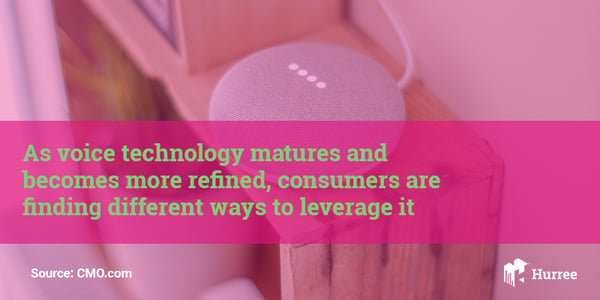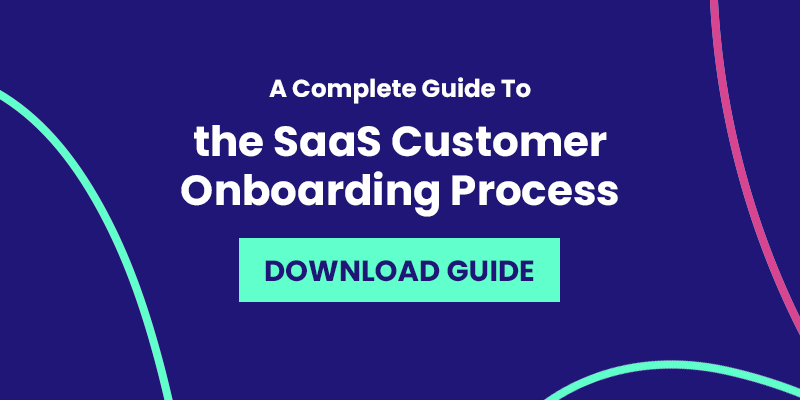Top 3 Things to Consider for Voice Search SEO
We live in a society where digitalisation is rife. We are constantly experiencing change, adaptation and technological innovations that affect cultural behaviours, norms, markets and industries - that’s a lot! So what does this mean for us marketers?
Digital disruption often means re-evaluating a few things. These things include current markets, products and practices. One of the most apparent modern disruptors is the digital voice assistant. You might be thinking that voice search has been around for a while, well it has, in fact it has been around for 9 years or so now. But it’s really upped its game recently. The rapid increase in smart speakers and voice assistants being used as part of consumers’ daily routines has undoubtedly piled on the significance of these intelligent little machines.
This has essentially forced marketers to re-evaluate the importance of voice search, recognise the impact that it’s having on marketing efforts and redesign marketing strategies in order to fit the bill. When we start to think about it in depth… it all gets a bit much. So let’s break it down. What exactly is a digital voice assistant? And how does it work?
Voice assistants (whether they’re being used on your phone, laptop, smart speaker or any other device) are designed to help with tasks or offer information. And they all have a "wake" phrase e.g. ‘Alexa’, ‘Siri’ or ‘Ok Google’. Once the wake phrase is spoken, the device then draws information from whichever search engine they’re linked to in order to fulfil the request of the user. Once we realise how useful and widespread voice assistants are, it’s then clear to see why marketing practices have to incorporate a strategy for SEO for voice.

“Voice is fast becoming one of the most exciting ways to connect with the world. As the technology gets better and users become more comfortable with it, the willingness to use voice for more tasks will grow.” - Kathryn Saxon, Head of Research at Wavemaker
However, with new ways of searching comes new techniques required for search engine optimisation, particularly for marketers. Search engine optimisation has evolved significantly over the past decade. Nowadays, it takes much more than just including a few links and keywords into your content if you want to get recognised. We must go beyond this; offer the viewer rich content, understand their intent and keep up with digital trends.
How will optimisation for voice impact marketing strategies?
As marketers, we’re used to adapting and thriving in new environments, but it’s not always that easy to know what we’re adapting to or for. That’s why we’ve laid out three key areas to consider for any marketers who are stuck on voice search optimisation.
1. Semantic Search
The word ‘semantic’ refers to the meaning of words and the relationships between them.
So what has semantics got to do with optimisation? In terms of SEO, put simply, semantic search is a data search technique that aims to improve search accuracy by understanding, or interpreting, natural language (kind of in the same way that a human would).
For a marketer, semantic search is becoming more and more important when it comes to optimising content. So how can you optimise content for semantic search, I hear you ask? Here’s a couple of handy tips:
-
Don’t just rely on keywords, look into key topics and create high-quality, comprehensive, relevant content. This could be in the form of 'Essential Guides’ or information-rich blogs and infographics, etc.
-
Target the intent of users and create content around their intentions.
-
Create topic clusters. Topic clusters allow you to capture a huge amount of search traffic over your relevant keywords and core topics. Because people change all the time, and their search behaviours are no exception.
-
Focus on UX (user experience) in order to provide the most satisfactory experience of information-absorption that your user can have, this includes optimising your website (if you’re using mobile or desktop, rather than a faceless home assistant), improving page speed, and analysing site and search analytics.
2. Featured Snippets
Featured snippets are essentially the summary of an answer asked by an individual.
They appear at the top of your results page and, along with the summary, the snippet includes a link to the page, the page title and the URL. Voice search and featured snippets are firmly linked, and the featured position is often highly sought after by marketers and brands alike. So how do you get your website or content to reach that all-important featured spot? Well that’s tough, because you can’t manually place your own website or information as the featured snippet. You can, however, specifically optimise your content so that your chosen search engine basically has no choice but to feature you - because your content is the richest content and the most relevant to a user’s specific request or query.
If optimised correctly and efficiently, your content or website can be the first thing that users see or hear when asking a question or requesting information. All you need to do, really, is:
-
Use question-form keywords i.e. how do I… what is… how to… etc. which caters for long-tail keyword optimisation.
-
Think about the core question or information your website intends to answer or address.
-
Organise content into short, snappy sentences and paragraphs, bursting with keywords, phrases and interesting information.
3. Personalisation
Personalisation means tailoring your content to suit the needs, wants, choices or interests of individuals.
We could probably all agree that it’s handy when search engines understand your preferences - such as things that you do and don’t like, for example. So how can we incorporate personalisation into our content if we want to optimise for voice search? Firstly, consider the relevant data that search engines already have, i.e. a user’s language, their location and their browsing history. Then look at your relevant data. Which devices do your viewers use more frequently? Which keywords or phrases are predominant? And target your content based on your findings.
Your data is also likely to differ depending on which voice assistant or smart home assistant is being used: Siri and Amazon’s Alexa draw information from Bing, whilst Google Home gathers Google data and so on. Different search engines are likely to yield different results which will affect your data and therefore the content that you create.
-
If you’re working with personas - analyse them to see what drives your target market, or if there are any noticeable trends in the data that you can utilise to improve UX by tailoring your content.
-
If you’re not working with personas, look at demographics and from there you will be able to identify your ‘typical’ smart speaker or voice assistant user - you might find that married couples, for example, are the most likely demographic to own a smart speaker or home assistant and that younger consumers frequently use voice search for queries and music.
Smart assistants and speakers are now catching onto the need for consumers to have a variety of options. What I mean by this is… If the consumer is using a screen-less device, they will only typically receive one answer from their voice assistant. Now, given the growing desire for personalised and varied content, when given a request, your device will still respond to the request, but will also direct users to the relevant website, or app, which will offer them access to an even wider variety of information.
This clearly shows the rapid rate at which voice is becoming used more frequently and, if understood and applied correctly, optimising your content for voice search will undeniably boost brand awareness, advance your reach and increase your overall website traffic - what more could you need! That being said, it’s good to note that brands and marketers must understand where to draw the line between personalisation and invasion of privacy… ensure that your data gathering and analysis is always GDPR compliant.
How do I implement it?
-
Get to grips with smart speakers and understand how they work
-
Optimise current and future content for voice in order to access that sweet spot i.e. the featured snippet
-
Structure your content in a way that suits FAQ and Q&A content (using what, how etc.)
-
Plan your marketing strategy around voice
-
Look towards products that will help you analyse your data, such as Hubspot, Google Analytics or SEMrush, to improve personalisation.
Conclusion
Voice search is in, and it’s here to stay. As marketers, we must embrace changes and revolutions and tailor our strategies to suit the fresh consumer and tech trends. There are plenty of tools and guides out there that aim to help you understand current digital developments. But the most important thing is that you analyse your company goals and your vision, analyse how you have aligned your marketing goals to meet this vision, and choose the best products that fit your budget and will optimise and advance your marketing strategy, content and brand.
Book a free demo today to see how Hurree can help you transform your company reporting and improve your sales & marketing output 💌 Don't hesitate to get in touch via contact@hurree.co if you have any inquiries - we’re happy to chat!
Share this
You May Also Like
These Related Stories

[Video] Ok Google, Tell Me About Voice Search SEO

7 Steps to Creating an Effective Content Marketing Strategy



